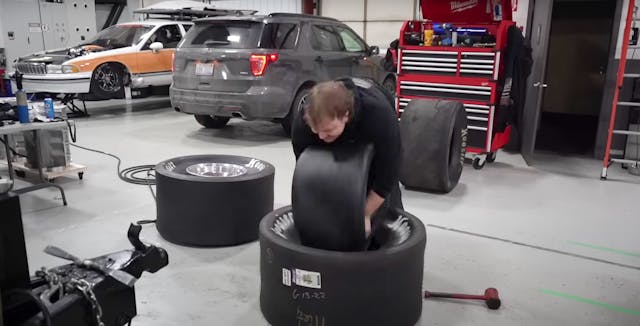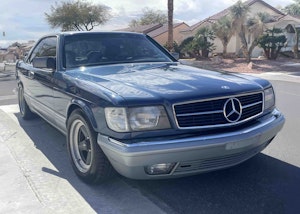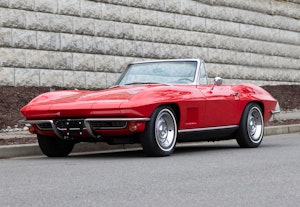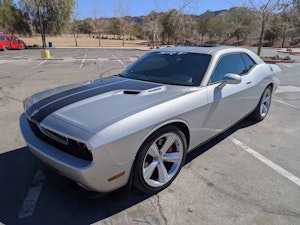Media | Articles
The tire secrets of a 3000-horse Buick station wagon
There are normal cars, and there are the ones built by Steve Morris. With over 3000 hp on tap in a stock-bodied 1990s Buick Roadmaster wagon, there has to be some black magic underneath to make the whole thing work. More, even, when you consider how that Buick can click off quarter-mile passes in the six-second range and make it look easy.
Sure, part of it is the pro-mod chassis underneath that factory sheet metal. But the Roadmaster also has some hidden secrets—ones Morris has decided to share.
Morris is best known for engine building, but the more I watch his YouTube channel, the more I want to keep watching. Mostly to see how he approaches some of the problems that come with driving thousands of street miles in the cars that rip off insane dragstrip passes.
The answer that most surprised me? Two rear tires. Well, four, actually. And the Buick wears them all at the same time.
Marketplace
Buy and sell classics with confidence
We won’t go so far as to endorse the explosive mounting method shown here. That said, the rest of the process piqued my interest. First, Morris shoved a small tire inside a larger one—he shoved a “liner” tire into a massive drag slick. Then he inflated the inner tire to 50 psi. The outer tire is kept far lower, at just 5 to 6 psi.
The concept is simple. The inner tire acts as a sort of bead lock for the outer one, preventing it from shifting on the wheel and deflating. I’d bet there’s also a bonus benefit in the event of catastrophic failure—if the tire blows and loses all pressure, the rim won’t hit the track. (The change in rolling diameter would definitely cause a lot of problems, but maybe that inner tire would help the driver maintain some control?)
That’s just the tires. The Roadmaster also drives from track to track on public roads. Rather than install an overdrive for this and introduce another failure point, Morris elected to fit an all-terrain tire. That choice had nothing to do with traction and everything to do with diameter. The truck tires he uses on the road are 37.5 inches tall, even taller than those outer drag slicks. That added rolling circumference lengthens the car’s effective final drive ratio, lowering engine rpm in every gear. It’s a simple and easy way to reduce driveline wear.

Tires are obviously critical to a car’s behavior, but it’s always fascinating to learn just how deep down the rubber rabbit hole you can go. Do we all need to think this hard about how our wheels and tires are set up? Probably not. Doesn’t mean it’s not fun to think about, though.
Or to keep in the back of your head as an answer for certain situations. On a personal note, I used this same technique on my 1965 Chevrolet Corvair Corsa. The Chevy’s rear tires are just a little taller than the fronts, making the effective gearing a little longer than it would be with a “square” setup on the same wheels, all four tires the same diameter.
There’s a compromise, of course; the change does affect acceleration, and the car is slightly less quick in a straight line. No matter—it just goes to show how complex problems can have very simple solutions.












The old trick of taller tires on the rear for the same effect as longer gears (thus reducing RPM at highway speeds) and visa versa for quicker acceleration is just that: old. In my street drag days, I changed out my tall “everyday cruising” tires for shorter ones on Friday and Saturday nights. Then the talls went back on on Sunday afternoon to ready the daily driver for the school or work week.
The idea of a tire within a tire combo shown here is quite unique, I think. Never saw it before.
i did not see the brand of tire
Is this really a Buick wagon, lik eit says in the title of the article? It’s missing the Buick Vista Roof and the grille says Chevrolet.
https://i.ibb.co/F7KcGsr/Wagon.jpg
What they are using is not a tire but a interliner. This is what NASCAR has used since the 60’s at super speed ways tracks and some short tracks. If they blow a tire that interliner still provides some grip to prevent the car hitting the wall or hitting as hard.
So please do not go sticking some kind of tire in the slick as it is not a regular road tire but a propose built liner.
As for the fire. That is just spray either starter fluid. It ignites and the air expands much like an air bag. It is not that much of an explosion as much an expansion of the air and it puts it on the wheel. You hit it with the air and inflate. I have done this with many tires from cars to air planes to tractors. All I will say is user beware. Like anything someone will find a way to get hurt so do at your own risk.
As for this combo it is not that unique as a number of race tires have employed it. It is not that common on a drag slick but as you see it can be adapted.